Reprint courtesy Calibre Magazine
For a variety of reasons, the history of the gun industry in Canada is somewhat abbreviated. While our neighbors to the south lay claim to such storied names as Horace Smith, John Browning, Eugene Stoner, and even one of our own in John C. Garand, Canada’s own experience in the realm of gunmaking has been generally sporadic and typically short-lived. Sure, we had the Ross rifle for a while there, but we all know how long that lasted. Then came John Inglis, who’s huge manufacturing firm did turn out massive quantities of legitimately excellent Hi-Power pistols and a myriad of machine guns for the Allied war effort… but now produces far less exciting products in the form of home appliances. And of course today we have Colt Canada, nee Diemaco. But even as difficult as Colt Canada’s, Inglis’, and Ross’ businesses ventures have proven to be, all have been predominantly federally-supported arsenal efforts. The civilian side of the industry has had an even tougher road to hoe.
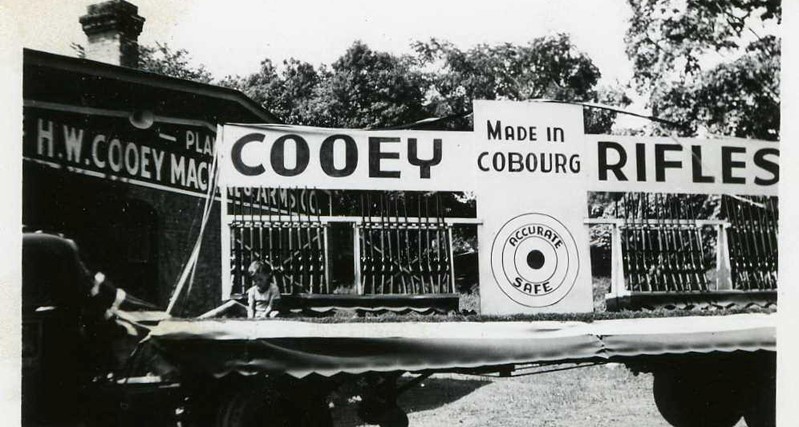
Cooey participated in local parades; trucking racks of long guns around town
But a few decades ago, long before the socio-cultural political assault on gun ownership began in this country, one company rose from a single ignominious machine shop in Toronto to a mainstay of our national firearms industry: The H. W. Cooey Machine & Arms Company.
Like almost all great gunmakers, the story of Cooey begins with the story of a single man: Herbert William Cooey. After dropping out of an apprenticeship with the Grand Trunk Railroad and quitting a job on an assembly line, the then 23 year-old H. W. Cooey opened his first machine shop up at the corner of Queen Street and Spadina Avenue in Toronto in 1903, referring to himself as a “mechanical expert and practicing machinist.”
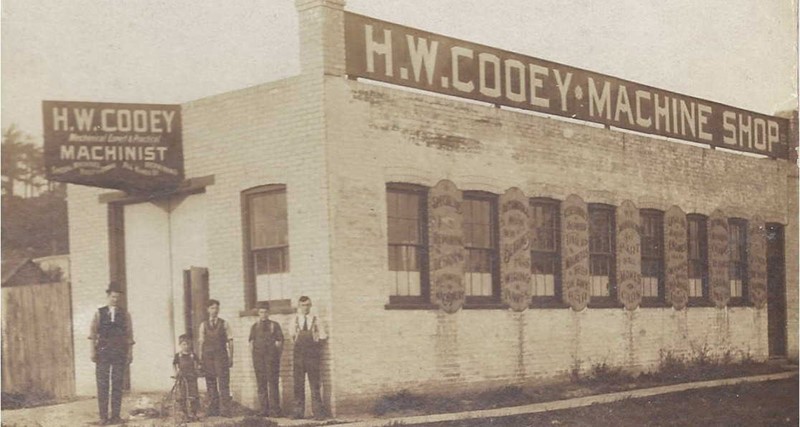
Cooey’s first plant at Spadina & York
By 1907 he’d proven his own (rather arrogant) statement to be at least partly true, when he took the wraps off an automobile of his own design that incorporated a couple innovative features, including a pre-heated fuel source and double exhaust valves. At the same time, he’d also proven a shrewd businessman, and after just four years in business the H.W. Cooey Machine Shop was forced to move across town into a larger shop at Bridgman and Howland Avenue in order to meet the demand for young Herbert’s talents.
But it wouldn’t be until the First World War that Cooey would turn his prosperous machine shop towards the manufacturing of firearms. Called into action to make various small rifle parts (including the folding peep sights fitted to the aforementioned ill-fated Ross rifle) and small-bore training rifles, Herbert Cooey’s firm rapidly set about gaining a reputation for building extremely high quality parts.
At the conclusion of hostilities, Cooey’s already successful firm found itself buoyed even further by their extensive war effort and the substantial funds it earned as a result, and Herbert wasn’t prepared to let the momentum slow. Having already seen huge successes from his time as a manufacturer of firearm parts for the Ross rifle, he began working on a complete rifle of his own design.
Debuting in 1919 as the Cooey Canuck, this single-shot .22 bolt-action rifle was an overnight sensation, and proved to be one of the most popular rifles of its time. Considered highly accurate but very affordably priced, the Canuck gained international acclaim in 1924, when the rifle won the Certificate of Honour at the British Empire Exhibition at Wembley Park; an industrial exposition created “to stimulate trade, strengthen bonds that bind mother Country to her Sister States and Daughters, to bring into closer contact the one with each other, to enable all who owe allegiance to the British flag to meet and know each other.” Winning a Certificate of Honour there was no small feat either; the Exhibition was the largest ever staged in the world in 1924, costing 12 million pounds and being attended by 27 million people.

Herbert Cooey and his wife, Suzannah
At the same time as Cooey’s Canuck was earning fanfare at the Exhibition, Herbert himself was working towards earning some accolades of his own at the 1924 Olympics held in Paris, France. Supplying the Canadian national team with the guns they would use in no less than 10 shooting events, Herbert himself shot with the Canadian men’s trap team, who would go on to win silver at the games.
By now the company known as H. W. Cooey Machine & Gear had committed itself to the manufacture of sporting arms, and changed its name to reflect that, becoming the H. W. Cooey Machine & Arms Company. Advertising the ever-popular Canuck (later renamed the Ace) in a myriad of papers and magazines, Cooey continued to put forth an image of excellent quality and wasn’t afraid to say so with ads that read “Make mine a Cooey – I want the best,” and “Don’t Take a Substitute.” But it was the ad in a 1922 issue of Rod & Gun Canada that perhaps best defined the Cooey rifle as “The ideal Christmas present for the red-blooded boy, whether he lives in the city, the town or the country.”
Cooey’s Single-Shot Rifles: The Cooey Canuck & Model 39
The Cooey Canuck set the stage for what would become, over the course of literally decades, one of the most iconic of Cooey firearms: The single-shot .22. Perhaps best known as the Model 39, this action would also come to be known as the Ace, the Bisley Sport, Model 75, and perhaps a dozen other models, brands, and assorted nomenclatures.
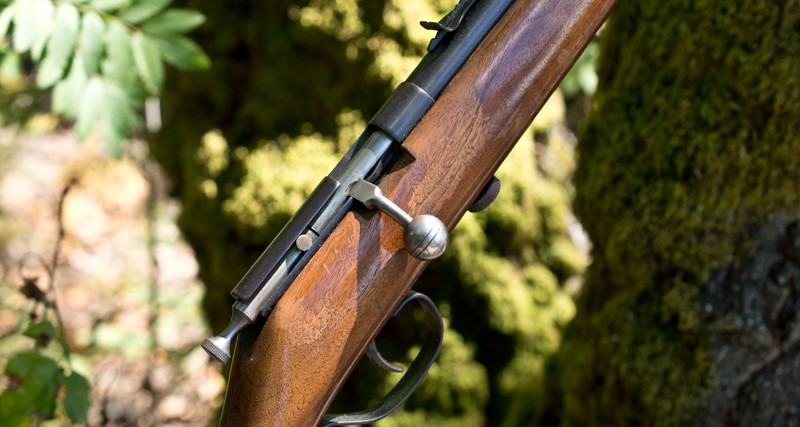
The Cooey single-shot .22 rifle would birth dozens of various models throughout its lifetime
The first of Cooey’s designs, this single-shot action that seems so rudimentary today was quite innovative when new, due in large part to the unique automatic half-cock safety. Billed by Herbert as a “patent pending system” (although there is no evidence of patents having ever been filed) this system employed a two-part bolt that used a half-cock notch on the striker assembly to retain the striker behind the bolt face when the bolt was closed, but did not actually bring the action to a fully cocked position. To do that, the shooter would have to grasp the tail of the closed bolt, and pull rearward. This engaged the striker upon the sear and completed the task of readying the rifle for firing.
As a result of this system, the Cooey Canuck was considered one of the safest rifles of its day, which combined with its diminutive calibre to make it popular among younger shooters and, more importantly, their parents. But don’t let that fool you: This is no toy. Although various models were obviously aimed at (no pun intended) younger audiences of the day, plenty of adults flocked to the early single-shot Cooey rifles due in no small part for their exemplary reputation for accuracy. Even today, well used examples are easily capable of shooting with accuracy that is on par with or better than many mainstream modern bolt-action .22s. And since they are some of the most simple, slow-shooting guns you’ll ever come across, it is highly unlikely that anything will have been worn out through too much use!
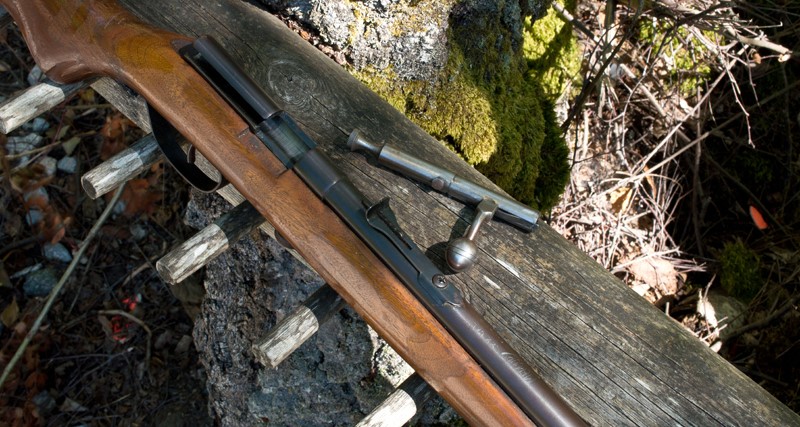
Simple, reliable, and safe, the Cooey made for an excellent gift for hundreds of thousands of young Canadians
By 1929, demand for Cooey rifles had outgrown the production capacity of Herbert’s facility at Howland and Bridgman, so the new Cooey Machine & Arms Company left Toronto in favour of a new facility in Cobourg. Taking over what was Cobourg’s largest industrial building and the former home of the Ontario Woollen Mill, the new building offered four and a half stories of square footage, and gave the firm the increased manufacturing capacity Herbert desperately needed in order to grow. And grow he did… by creating yet another iconic Canadian rifle: The Cooey repeater.
A Repeater Is Born: The Model 60 & Model 600
At the heart of Cooey’s new repeater was a new action, pictured here in the author’s Model 600, and easily identifiable by a new notch cut into the receiver to accept the cocking lug on the striker; Cooey’s first actual safety. With the rifle cocked, the bolt tail is pulled rearward and rotated, placing the cocking lug into the slot and preventing the rifle from firing. Coincidentally, as some of these more modern Cooey rifles wear, they can end up re-acquiring the automatic safety system of their forebears as the striker frustratingly ends up sliding into the safety notch upon closing the bolt. But that’s nothing that can’t be fixed! Furthermore, the half-cock notch of the earlier action was retained, allowing the rifle to be carried uncocked, but loaded and with the action closed.
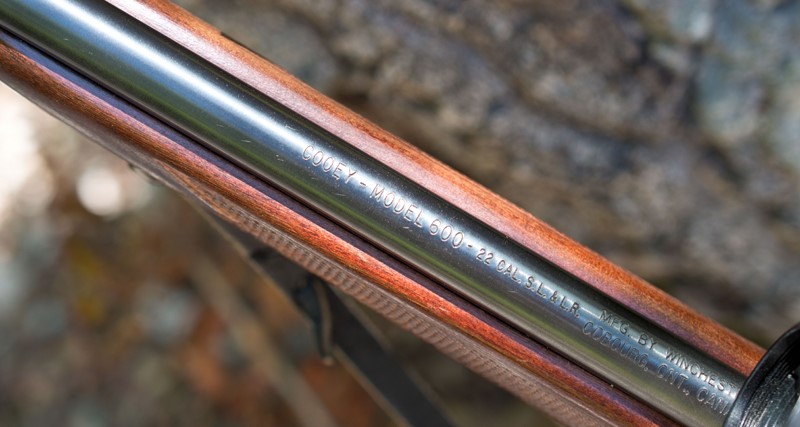
The later Cooey Model 60 and Model 600 tube magazine-fed rifle continued the single-shot’s success
Of course, a faster action would be useless without a magazine to feed it, and at the time during which this Cooey repeater was being created there was no clear winner in the rimfire war; .22 Short, Long, and Long Rifle were all still commonly available and widely used. So, Herbert knew his repeater needed to be capable of carrying, chambering, and firing all three. And that meant one thing: He needed a tubular magazine. Slung below the action, with a removable follower, and a small loading port positioned forward and at the 6 o’clock position the Model 60’s magazine was long enough to swallow 11 rounds of .22 Long Rifle ammunition.
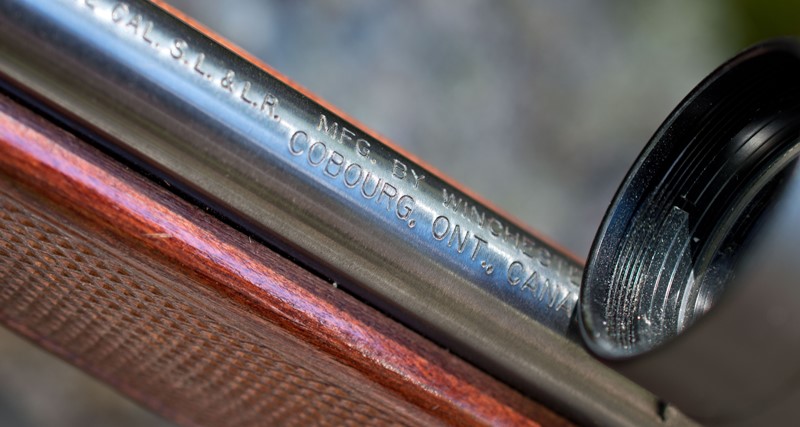
Marked as a Winchester rifle, this Cooey 600 was one of the rifles made after the Cobourg firm was purchased by Olin-Winchester, but before the plant moved to Lakefield
But that desire to remain compatible with three very different lengths of ammunition also meant that rounds would need to be fed from the magazine directly onto the bolt face using a Mauser-style controlled round feed. This brings us to yet another significant update to the venerable Cooey design; the dual spring-steel extractors on the bolt face. Wrapping around the top of the bolt, with protruding and bevelled claws stretching around the bolt face, this simple piece of stamped spring-steel allowed rounds to rise out of the magazine and be held affixed to the bolt face as the bolt was closed. The bevelled extractors prevented the round from rising too high on the bolt face, and the magazine below prevented the round from sitting too low on the bolt face, meaning the round would sit at approximately the right height to allow it to feed into the chamber, and the bolt to close behind it. During extraction, the dual extractor claws provided a ton of gripping area to pull the fired casing out of the chamber, and allowed the next round to push the fired casing up and out from between the spring steel claws, which would snap back around the loaded round now on the bolt face, allowing the cycle to repeat.
As one of Cooey’s most popular rifles, the Cooey Repeater (best known as the 60 and 600 but also having been available under numerous other names) was rugged and reliable, and brought the same level of accuracy Cooey’s single shot rifles were known for to a much more practical package. However, there is no getting around the fact that these are far more complex rifles, and they can be incredibly frustrating when they start to break down. Key parts to keep an eye on include the spring steel extractor, the magazine tube, and the follower. Usually, problems of unreliable ejection can be traced back to shooters too softly working the action, as the rifle’s ability to properly eject and feed rounds is directly related to the force with which the action is manipulated. However, be judicious in your heavy-handedness, as you obviously don’t want to beat the gun up unnecessarily.
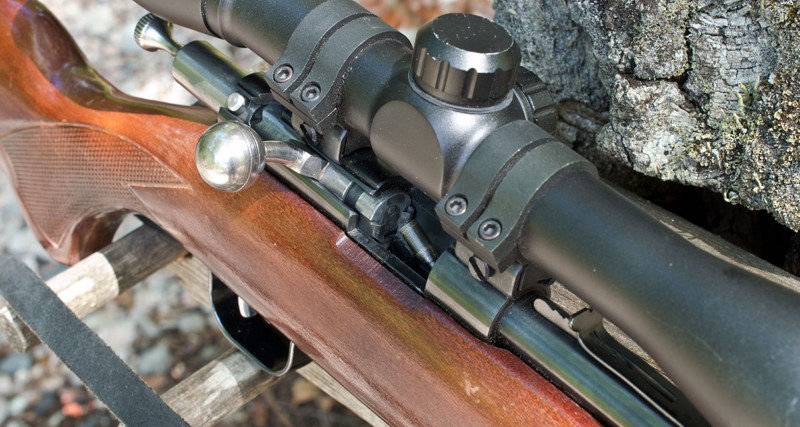
The relatively unique Cooey action still works reliably all these years later, but parts can be difficult to source
Having created the wildly popular Model 60 repeating rifle in 1939, Cooey once again soon found himself embroiled in another war-effort economy. And again, he tooled up to support the effort, creating the Model 82 training rifle during World War II (which earned a contract for the procurement of 34,810 rifles by the army and R.C.A.F. Air Cadet Corps). Designed to mimic the look and, to a lesser degree, the handling of a full-size Lee Enfield rifle the Model 82 or M82 was little more than a Lee Enfield-style stock on a convention Model 39. However, the rifle’s historical relevance and relative rarity make it something of a collector’s piece today. And coincidentally, many are still in active service with the Royal Canadian Air Cadet Corp! But, just like in the months and years following World War I, the Cooey firm was keen to keep growing, and expanding their product offerings. So, with Herbert’s son Hubert taking on much of the design work at the company, the two Cooeys directed their engineering talents towards Cooey senior’s own passion: Shotguns.
The Model 84: Cooey’s Break-Action Smoothbore
It is somewhat fitting that one of the first guns designed by Hubert Cooey would also represent a massive departure from the Cooey tradition of rimfire rifle manufacturing. However, as disparate as a smoothbore may have been from Cooey’s bread and butter, Hubert was obviously raised in the Cooey culture and so knew that any shotgun bearing the Cooey name needed to marry practicality, reliability, and value. The best solution? A single-shot break-action.
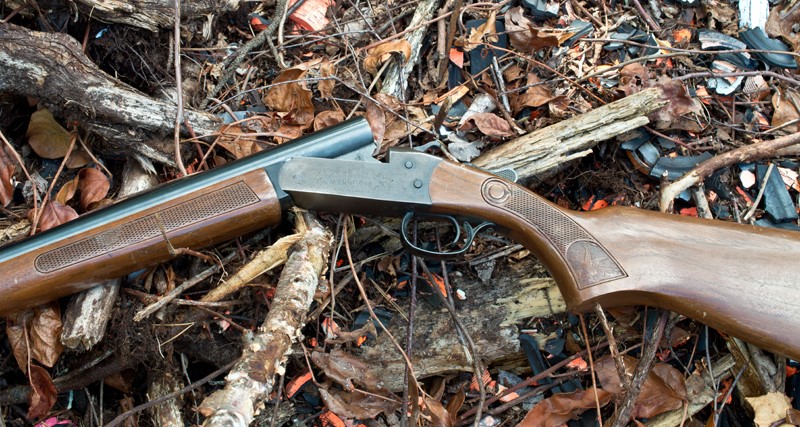
The Cooey 84/840 is a Canadian gem; handling very nicely and proving incredibly robust
A massive change from the usual Cooey production, the Model 84 debuted in 1948 as a svelte and compact single-shot break-action shotgun in .410, 28-, 20-, 16-, and 12-guage. Simplicity was at the forefront of Hubert’s mind while creating the 84, as the simple single-shot design kept the lockwork separate from the action and required the shooter load the gun and then cock it in a separate action unlike many other break-action shotguns. As a result, shooters were expected to keep the gun broken or uncocked until ready to shoot, so there are no external safeties. Barrel lengths varied greatly from 26” to 36” long, and although early models were restricted to 2-3/4” long chambers, later Model 840s (the nomenclature change denoting guns made after the 1961 acquisition of Cooey Machine & Arms Co. by Winchester) had 3” long chambers.
The ethos of simplicity is even more evident in breaking the Model 84 down. Unlike most other break-action guns, there is no latch under the fore-end to secure the forestock to the barrels; instead it is simply held in place by spring tension. Simply pulling the forestock away from the barrels releases it. From there, the gun is further broken down by opening the action (which, coincidentally, can be done by pushing the lever left or right) and pulling the barrels off their pivot, like one would any other break-action.

Breaking down simply, and with so few moving parts, many 84 and 840s remain in use today
The Model 84 and 840 remained exceptionally popular throughout the gun’s 31-year production run. Over 1.9 million of these shotguns would leave the Cobourg factory before the Cooey brand was mothballed, and Winchester would follow up on the 84/840’s success with their own Model 370, 395, 168, and 37A; all based upon Cooey’s design. And it’s not hard to see why. With a slender receiver, a reliable action, and an excellent balance it is a very sought-after shotgun.
Unfortunately, tragedy would befall the Cooey family in the late ‘50s, with Hubert passing away suddenly and unexpectedly in 1957. Herbert would come out of retirement to head the firm that bore his name for a few brief years before selling Cooey Machine and Arms to the Olin Corporation in 1961, shortly before his own death in the February of 1962 at age 80. Two years later, Olin had already placed Cooey under the management of their Winchester-Western Division, and Cooey would launch their most successful design to date; a design that combined the firm’s knowledge of rimfire rifles with the more modern desire for a reliable semi-automatic repeater. That rifle? The last rifle a Cooey would design, and the only Cooey product still in production today: The Model 64.
The Model 64: Cooey’s Continued Living Legacy
Officially launched in 1964 (the same year Ruger launched the 10/22), the Cooey Model 64 had roots in the mid-50’s, when Hubert Cooey recognized Cooey’s need for a semi-automatic repeater to join their strong bolt-action lineup.

The Savage 64, originally known as the Lakefield 64b, was the last gun design penned by a Cooey
Borrowing heavily from his father’s work on the Model 39, Hubert took a similar bolt, receiver, and trigger design and matched it with a simple direct-blowback system operated via a small action spring mounted to the tail of the bolt assembly. Then, he fitted the trigger group with a simple lever-style safety not unlike that found on the Remington Model 700 (introduced in 1962), and designed a simple but effective 10-round box magazine from which the blowback action would reliably feed.
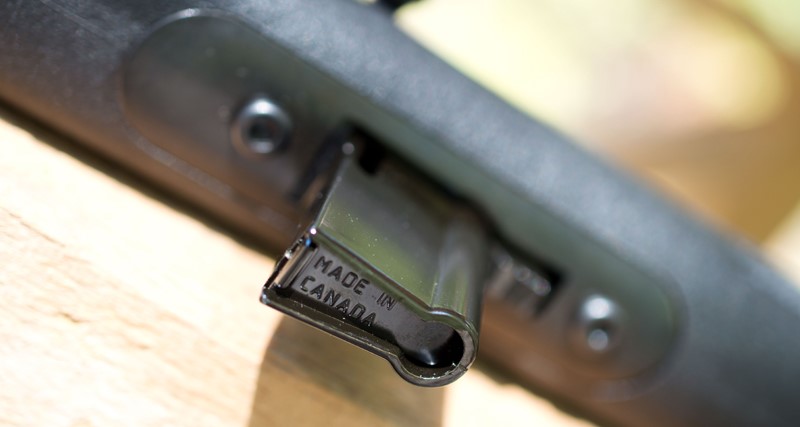
Still made in the Lakefield plant, where much of Cooey’s manufacturing equipment and staff went, the Savage’s design is almost unchanged
Unfortunately, as simple as the gun was, Hubert would die before the project was seen through to completion. Likewise, Herbert would find himself somewhat overwhelmed when he returned from retirement to take command of the company once again after his son’s passing, a fact that many indicate as a key motive behind his sale to the Olin Corporation. But Olin, the conglomerate behind Winchester, recognized the value in Hubert’s design and ordered Cooey to put the lightweight and simple Model 64 into production to give the brand something with which to compete against the likes of the Marlin Model 60 and equally new Ruger 10/22.
Like all Cooey firearms, the Model 64 was immediately regarded as simple, efficient, reliable and most of all, a bargain. Even ten years after its introduction the Model 64 would still be available here in Canada for less than $50. Sadly though, even with the long track record of producing excellent products, it wasn’t long before political and labour issues forced the closure of Herbert’s long-lived Cobourg facility in 1979. But, through some fortunate happenstance, the machinery and hardware used within the Cooey plant would find a new home down the road in Lakefield, Ontario with the aptly named Lakefield Arms Company; a company where many former Cooey employees would also find their next job.

In continual production for decades, the Savage/Lakefield 64 is one of only a handful of Canadian-made guns on the market today
But Lakefield Arms didn’t just get Cooey’s hardware. They also got the rights to Cooey’s Model 64. So, with the machinery moved and many of the same people manning it, Lakefield Arms retooled the production line and began production of their own Model 64; the Lakefield Arms Model 64B. Even after Lakefield Arms was purchased by Savage Arms in 1995 the production of Hubert Cooey’s Model 64 continued right up to the present day. Now known as the Savage Arms Model 64, it remains one of Savage’s most popular offerings, with no less than six different sub-models currently available.
Before Cooey was dissolved entirely, it is estimated that approximately 12 million firearms would leave Cooey’s various factories. From 1919 until April 1961, production schedules remained a relatively steady 20 firearms per day, which increased dramatically when the firm was sold to Winchester, who in turn replaced the Cobourg facility’s aged machinery with modern hardware. This increased the plant’s production capacity to 2,000 firearms per day. Over 67 different models of firearm would fill the Cooey catalog eventually, with numerous other firearms produced for other brands such as Hiawatha, Iver Johnson, Winchester, Mercury and various others.
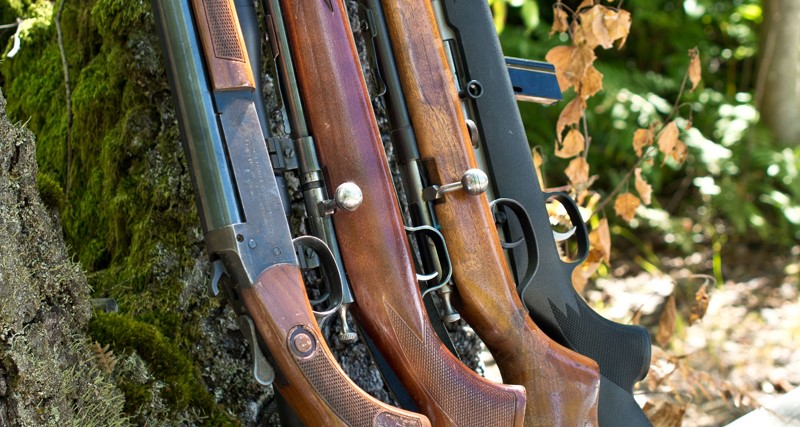
While most Cooey designs are relegated to the history books, Savage’s 64 keeps at least one Cooey design in production
That Cooeys are basic, affordable guns cannot be debated. But there’s something about them. They are part of our nation’s shooting heritage. For many of us, they’re the first guns we ever laid hands on, and undoubtedly for many more they will provide a similar service again as we introduce our own young ones to the shooting hobby. They’re rugged, they’re reliable, and they represent a time in Canada’s past when it wasn’t untoward to give a young boy a rifle for his birthday. So if you happen to be lucky enough to own one of these rifles, hold onto it. Look after it. And use it. It’s what they were designed for.
Source: https://calibremag.ca


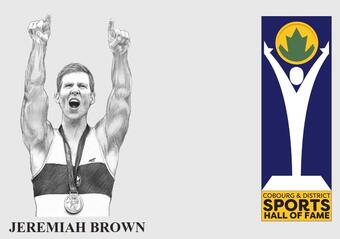
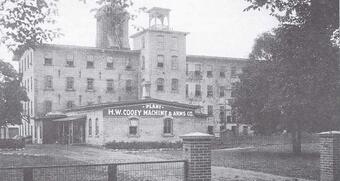














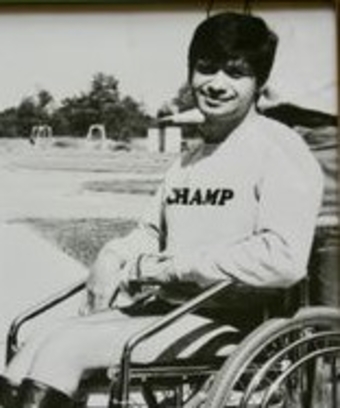
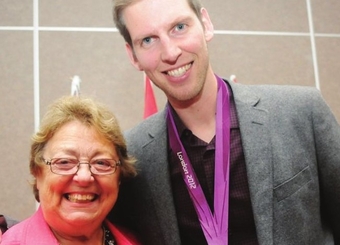
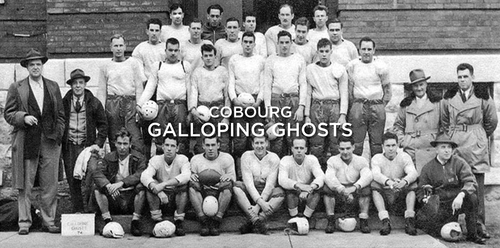

need parts
Hi there how are you. well im looking for parts for 12 Gauge-30 inch full choke. on the front holder when the hand grab the gun, thee is a braket that attach the pice to the gun I need tha braket and screws if you have them please my grand father has or had a collection of guns all from your company some to old to even read the writing in it I would like to re-store them i can send you pictures of them if you like to make sure I order the proper parts. I hope you can help thank you for your time and hope to heard from you soon Thank you again and have a great day Tony